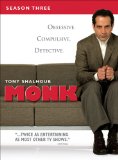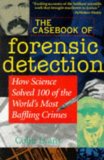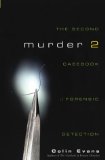What are the Best Baseball Sites?
Feb 17
Another baseball season is finally upon us! I follow baseball with a passion that borders on addiction. Well, perhaps it’s beyond the border. The internet is a great place to get information. I have compiled a list of some of my favorite baseball sites. I have focused on sites where most of the content is free (with the exception of mlb.com, just because of my addiction to MLB audio)
MLB.com, of course, is the official site of Major League Baseball. In addition to news, standings, etc, MLB.com is home to MLB.tv and MLB Audio. For $80 (or $110 for premium content) you can watch any game on your computer (subject to blackout restrictions) all season long. For $14.95, you can listen to the audio feed of any game (not subject to blackout). This works great for out of market teams. I live in Iowa and follow the Rockies, so this works great for me.
MLBTradeRumors is a nonstop source of rumors about trades and free agent signings. Updates occur multiple times during the day, hitting a frantic pace at the trade deadline. The guy who runs the site scours multitudes of other sources in an effort to compile every rumor.
SportsBlog Nation is a compilation of blogs from every major sport. The folks who run each blog keep up to date on every aspect of the team and pass the knowledge on to you. In addition to covering the major league team, they also keep you up to date on all of the minor league teams in your organization. The fan interaction is also a great feature. Game threads – in which fans are commenting on game action as it occurs – is pretty cool.
Renowned minor league analyst John Sickels runs Minorleagueball.com. John is one of the most knowledgeable minor league experts in the country. He publishes a book on prospects every year, but he also gives out an incredible amount of free information on his site.
There’s also the official Minor League site. MILB.com posts draftee profiles each spring.
You can find player salary information in several places, but COT’s Baseball Contracts keeps tracks of all the nitty gritty details – such as incentives and service time (helpful for determining when players will be eligible for arbitration or free agency).
baseball-reference.com is the best place I have found for baseball statistics. It tends to allow you to delve a bit more deeply into the numbers. In addition to tons of great content, BR’s premium “PI” service allows you to do some really deep searching. You can subscribe to PI for very short time periods (as low as $1.35 for 24 hours) so you don’t necessarily need to pay the $29 annual fee for a short research project.
Fangraphs goes into a lot of depth in their statistics. Considering the name, it should come as no surprise that they also have graphs on the site. The graphs show how player performance has differed from year to year, while also comparing the performance to the MLB average for those statistics.
The Lahman Database is a free (donations accepted) compilation of statistics for every player from 1871-present. MS Access, SQL, and CSV formats available.
From small ball to the long ball analyzes the types of pitches every pitcher has seen, as well as the types of pitches that every batter has seen. Update: this blogger has decided to retire and has removed some of the content.
Summer Ball covers collegiate players, with a specific focus on the collegiate summer leagues. The summer leagues use wood bats instead of the aluminum bats used in NCAA games. If a player performs well in a summer league, it can often boost their stock in the draft, since the adjustment to wood can be a problem for some players.
Nippon Baseball Tracker covers Japanese leagues.
MLB’s Collective Bargaining Agreement can be downloaded in PDF format. I actually have a printed copy of the CBA which I keep in a binder. I wouldn’t say that it is a page turner, but it is great for settling arguments.
 RSS
RSS










